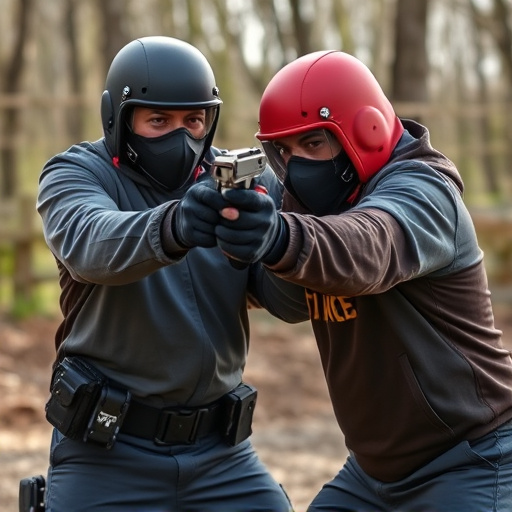Self-defense stun guns designed for college students require precise electrode spacing and placement for optimal effectiveness. By targeting vital spots like the neck, groin, or behind the knees, these devices can quickly disable an assailant. Proper training in holding and activating stun guns is crucial for consistent contact with targeted areas. Smaller stun guns with closer electrodes are ideal for tight spaces on campus. Thorough testing against diverse body types and environmental conditions ensures consistent effectiveness across various scenarios.
“Uncover the critical aspect of self-defense stun gun effectiveness: electrode spacing. This comprehensive guide explores how understanding and optimizing electrode placement can enhance shock delivery, especially for college students seeking optimal safety. From ‘Self-Defense Stun Guns for College Students’ to ‘Factors Influencing Electrode Spacing,’ learn about the science behind these devices. Discover key insights that could make all the difference in real-world scenarios.”
- Understanding Stun Gun Electrode Spacing: Key to Effective Shock Delivery
- Self-Defense Stun Guns for College Students: Ensuring Optimal Safety with Proper Electrode Placement
- Factors Influencing Stun Gun Electrode Spacing: A Comprehensive Analysis for Maximum Impact
Understanding Stun Gun Electrode Spacing: Key to Effective Shock Delivery
Stun gun electrode spacing is a critical aspect that determines the effectiveness of the device in delivering a powerful shock, making it an essential factor for self-defense stun guns designed for college students. The electrodes are responsible for conducting electric current to the target, and their strategic placement ensures optimal shock distribution. A well-designed stun gun features electrodes positioned to maximize contact area on the body, thereby increasing the intensity of the stun.
Understanding electrode spacing allows users to leverage the device’s full potential in self-defense scenarios. For college students, this means learning how to properly aim and activate their stun guns for maximum impact. By knowing the optimal spacing, students can ensure they receive a strong enough shock to disable an assailant quickly, enhancing their personal safety while on campus.
Self-Defense Stun Guns for College Students: Ensuring Optimal Safety with Proper Electrode Placement
Self-defense stun guns are becoming increasingly popular among college students as a means to protect themselves while on campus. Proper use of these devices heavily relies on understanding optimal electrode placement for maximum effectiveness. In most self-defense stun guns, electrodes are designed to make contact with an attacker’s vital areas, such as the neck, groin, or behind the knees. Ensuring these electrodes are aligned correctly is crucial for delivering a powerful jolt that can temporarily incapacitate an assailant.
College students should receive training on how to properly hold and activate their stun guns, emphasizing the importance of accurate electrode spacing. This includes practicing techniques to ensure consistent contact with targeted areas during a struggle. By mastering proper electrode placement, students can increase their chances of disarming or deterring potential attackers, thereby enhancing their overall safety while on campus.
Factors Influencing Stun Gun Electrode Spacing: A Comprehensive Analysis for Maximum Impact
The effectiveness of a self-defense stun gun, especially for college students considering personal safety, is significantly influenced by electrode spacing. This parameter plays a crucial role in delivering electric current to neutralize an assailant. Several factors impact this critical aspect. First, electrode placement and size matter; closer electrodes ensure quicker discharge, enhancing the shock’s intensity and coverage area. Thus, smaller stun guns with compact electrode arrays can be more effective for those in tight spaces like dormitories or crowded classrooms.
Furthermore, the material and conductivity of electrodes affect performance. High-quality, conductive materials ensure optimal current flow, maximizing the impact on the target. Environment conditions, such as humidity or extreme temperatures, also play a role; these factors can alter electrode efficiency, requiring users to consider their local climate when choosing a stun gun. Additionally, testing against various body types and sizes is essential to guarantee consistent effectiveness in different scenarios college students might encounter.
In conclusion, optimal self-defense stun guns for college students rely on understanding and adhering to precise stun gun electrode spacing. This article has explored the critical role of electrode placement in ensuring effective shock delivery, highlighting key factors influencing spacing and providing valuable insights for maximum impact. By correctly positioning electrodes, users can maximize the safety and reliability of their self-defense tools, making them invaluable assets in navigating potentially dangerous situations.
